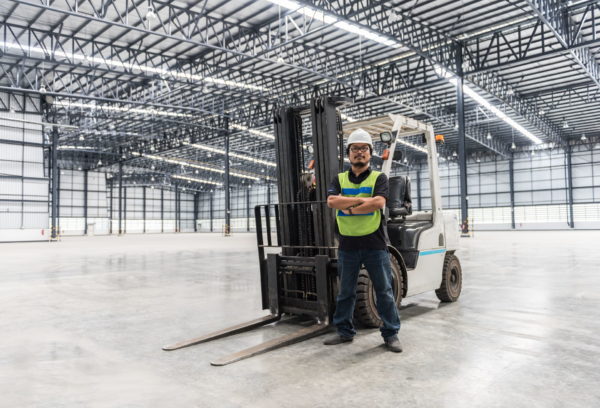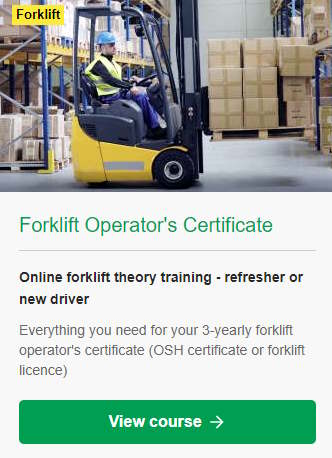The Approved Code of Practice notes one of the main causes of forklift accidents is ‘excessive speed’ and it encourages operators to operate at a ‘safe speed’. However, it isn’t prescriptive in terms of kilometres per hour. It talks about forklift operators observing ‘plant speed limits’, which means that the onus is on the company to define an appropriate speed limit based on the hazards in the working zone. The ACOP only mentions actual speeds when dealing with motorised pedestrian-operated pallet jacks or hand trucks, and that’s 5km/h.
At all times, it’s important that the forklift is operated at a speed that permits it to be stopped safely given the visibility and hazards. This means that while one speed limit might be defined in a working zone, the safe speed is variable depending on where the forklift is at the time, who is working in the forklift’s working zone and what the forklift is carrying.
Forklifts are heavy and often operate on tyres that don’t provide huge amounts of friction on the floor (particularly if it’s concrete and it’s dusty or slightly oily). The brakes are only on the drive axle, not on the steering axle, too, so when travelling in reverse, you do not get the advantage of weight shift helping you brake.
It’s easy to understeer a forklift when travelling too fast, particularly a forklift which has centre steering wheels.

As forklifts steer from the rear, excessive forwards speed can result in the forklift snaking due to overcorrection by the operator. If the operator needs to grip the steering wheel tightly to avoid sliding around on the seat, then the speed is too fast. Excessive speed around corners can cause the forklift to tip over.
What is a safe speed on a forklift?
There is no definitive answer. Many companies will post an arbitrary speed limit which is a general guideline for the maximum speed when the area has good visibility and few hazards. This is typically between 5 and 15km/h.
At all times, a forklift operator must be able to stop safely without hitting anything or losing the load. Bear in mind that an average human walks at around 5km/h, and in areas where people might be operating more quickly, up to 8-9km/h. Forklifts in close proximity to humans should not be moving significantly quicker then them.

On a road, a forklift only has to comply with the road rules: heavy vehicles without suspension between the wheels and chassis but have pneumatic tyres are limited to 45km/h or less if the posted speed limit is less. If the forklift has solid tyres (most do), then the speed limit across a bridge or level crossing is 15km/h.
When operating with work platforms or personnel cages, the forklift should only ever be moved at very slow speed (‘creep speed’).https://www.drivingtests.co.nz/course/forklift/
A forklift’s speed can be limited using a forklift speed limiter. If you are not using a speed limiter, then good communication, signage and training are important, as is working on the culture within the forklift driving team.

